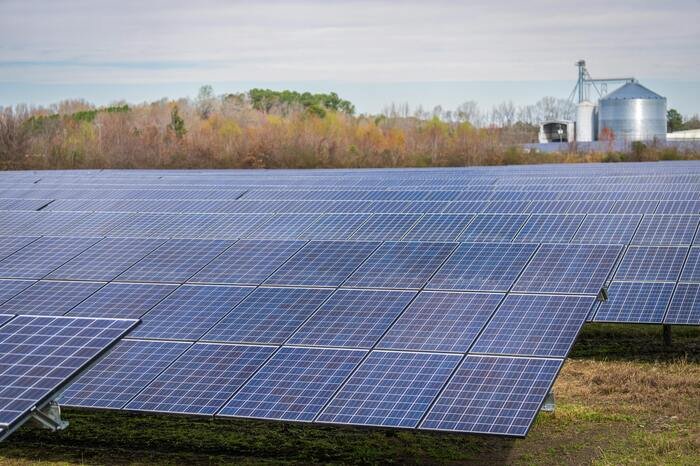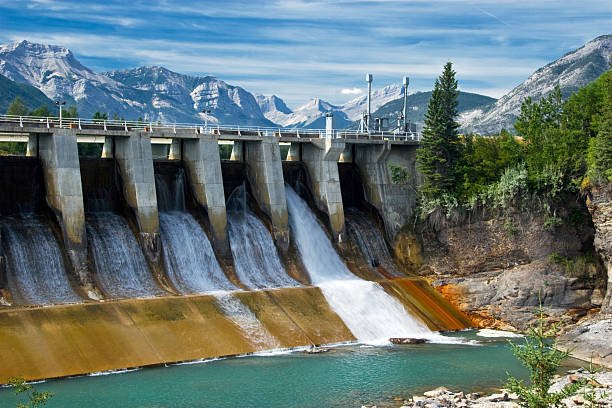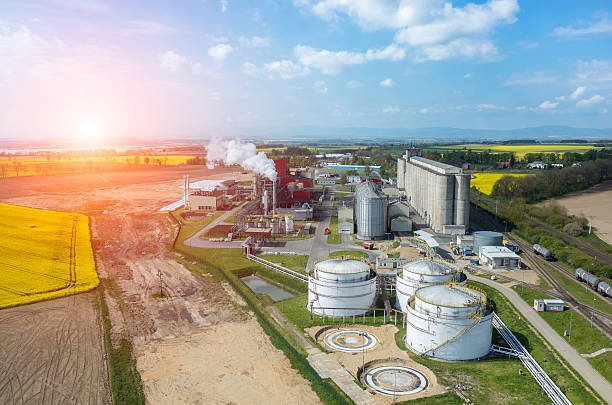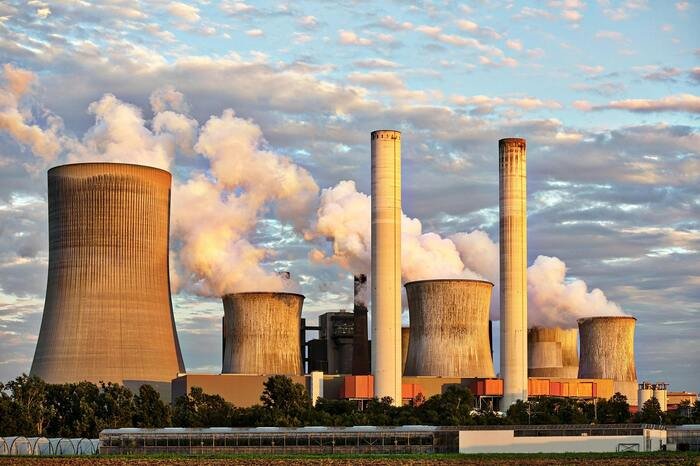Energy consumption worldwide continues to rise, with a growing emphasis on transitioning towards renewable energy sources. In this article, we will delve into the importance of renewable energy sources, explore the current energy landscape, and discuss the challenges we face in this transition.
What is Renewable Energy?
Renewable energy refers to energy derived from natural resources that are replenished on a human timescale, often within the span of a human lifetime or less. These resources are considered renewable because they are continuously replenished through natural processes, such as sunlight, wind, water flow, and geothermal heat.
Most Popular Renewable Energy Sources
- Solar energy
- Wind energy
- Hydro energy
- Tidal energy
- Geothermal energy
- Biomass energy
1. Solar Energy
Solar power, derived from the sun, is highly valued for its environmentally friendly and sustainable nature. Utilizing solar panels provides a clean energy alternative that comes with numerous advantages. Harnessing solar energy allows us to reduce greenhouse gas emissions and combat climate change. Additionally, it helps decrease electricity expenses, leading to improved financial stability. Moreover, it enhances energy self-sufficiency by diversifying our energy sources and reducing our dependence on fossil fuels.

Solar technology advancements have greatly increased system efficiency and flexibility. Enhanced panel design and manufacturing have raised the efficiency of photovoltaic cells, while storage options such as battery technology allow for excess energy storage. Cutting-edge uses, such as solar-powered vehicles and appliances, provide exciting opportunities for sustainable living and transportation.
Installing solar power systems may have high upfront costs, but long-term savings on energy expenses usually make up for it. Solar energy advancements have boosted efficiency, while financing options and government incentives make it more accessible. Consumers can support sustainability and financial goals for a cleaner energy future.
2. Wind Energy
Wind power utilizes the force of the wind to produce electricity through wind turbines. These turbines transform the wind’s kinetic energy into mechanical power, which is then converted into electrical power. Wind energy is utilized in various ways, from powering residential and commercial buildings to supplying electricity to remote regions and supporting extensive grid systems.

Wind energy has seen substantial growth on a global scale, with the installation of wind turbines increasing rapidly in recent years. This expansion is fueled by the growing recognition of the environmental advantages of wind power, such as decreased greenhouse gas emissions and air pollution, along with decreasing costs and advancements in wind turbine technology.
Despite its rapid expansion, wind energy encounters several challenges, including intermittency, variability, and grid integration issues. Nevertheless, innovative solutions like energy storage systems, grid flexibility measures, and advanced forecasting techniques are being developed to tackle these challenges and optimize the potential of wind energy. Furthermore, continuous research and development endeavors are concentrated on enhancing turbine efficiency, reducing maintenance expenses, and improving overall reliability to further promote the adoption of wind power.
3. Hydro Energy
Hydropower is a sustainable energy source that taps into the kinetic energy of water to produce electricity. It is a reliable and widely utilized form of renewable energy that plays a significant role in global electricity production.

There are various types of hydropower systems, such as conventional hydroelectric dams, pumped storage hydro, and run-of-river hydro, each utilizing water’s energy in different ways to generate electricity effectively.
Despite its advantages, including low greenhouse gas emissions and consistent energy production, hydropower can have negative environmental effects like habitat disruption and changes in water flow patterns. However, with careful planning and mitigation strategies, these impacts can be minimized, ensuring that hydropower remains a sustainable energy choice.
4. Tidal Energy
Tidal energy, a renewable energy source, utilizes the gravitational forces of the moon and the sun on Earth’s oceans to generate electricity. By harnessing the kinetic energy of tidal currents and waves, it provides a consistent and dependable power supply.

There are various types of tidal energy systems, including tidal stream generators that resemble underwater wind turbines and capture energy from the movement of water. Another type is tidal barrages, which harness the potential energy of tides by trapping water in reservoirs and releasing it through turbines.
One of the significant advantages of tidal energy is its positive environmental impact. It produces zero greenhouse gas emissions and has minimal visual impact compared to other energy generation methods. However, it also presents challenges such as potential disturbance to habitats and impacts on marine ecosystems. To address these concerns, careful consideration of site selection and design is essential to minimize environmental impacts and ensure the long-term sustainability of tidal energy projects.
5. Biomass Energy
Biomass energy is a renewable energy source that comes from organic materials like wood, agricultural residues, and organic waste. It includes various biomass feedstocks such as forest residues, crop residues, energy crops, and organic waste from households and industries.

Biomass has numerous advantages, such as its abundance, wide availability, and potential for carbon neutrality when managed sustainably. It can also offer a dependable energy source and help rural economies by creating jobs and utilizing local resources. However, biomass energy production may present challenges like land use competition, air pollution from combustion, and potential impacts on biodiversity and ecosystem services.
The future outlook for biomass as an energy source looks promising, with ongoing research and development efforts focused on improving biomass conversion technologies, enhancing feedstock sustainability, and reducing environmental impacts. Advanced bioenergy technologies like biomass gasification, biofuel production, and biorefineries show potential for boosting the efficiency and flexibility of biomass energy systems. Moreover, integrating biomass energy with other renewable sources like wind and solar can improve overall energy reliability and contribute to a more sustainable energy future.
6. Geothermal Energy
Geothermal energy is a sustainable source that taps into the Earth’s heat to produce electricity and heating. It utilizes natural reservoirs of hot water and steam, as well as enhanced systems that extract heat from deeper rock formations. This energy is used for various purposes, such as electricity generation, heating buildings, greenhouse agriculture, and industrial processes.

Geothermal energy production involves drilling wells into these reservoirs to access hot water or steam, which is then used to drive turbines and generate electricity. Different technologies, like binary cycle, flash steam, and dry steam systems, are utilized based on the temperature and characteristics of the geothermal resource.
Geothermal energy offers numerous environmental benefits, including low greenhouse gas emissions, minimal air pollution, and a small land footprint compared to other energy sources. It also provides a reliable and constant energy source regardless of weather conditions. However, environmental concerns like induced seismicity, groundwater contamination, and land subsidence need to be carefully managed to ensure the sustainability and safety of geothermal projects. Proper site selection, monitoring, and regulatory oversight are crucial for minimizing risks and maximizing the environmental advantages of geothermal energy.
What isn’t a renewable energy source?
Non-renewable energy sources, like fossil fuels and nuclear energy, are derived from finite reserves in the Earth’s crust and cannot be replenished on a human timescale due to their lengthy formation process. The extraction and consumption of these sources outpace their natural replenishment rate, leading to environmental degradation, pollution, and greenhouse gas emissions. As the world’s energy needs increase, there is a pressing need to shift towards renewable energy sources to combat climate change and ensure long-term environmental sustainability.
The Future of Renewable Energy
Advancements in technology and the increasing global demand for eco-friendly alternatives are paving the way for a promising future in sustainable energy. Solar, wind, hydro, and geothermal power are at the forefront of the shift away from fossil fuels, as their costs decrease and efficiency improves, making renewable energy more accessible than ever before. Notable trends in this field include the reduction of costs, developments in energy storage, and integration into intelligent power grids. Ongoing research in areas such as hydrogen fuel cells and bioenergy holds the potential for even more innovative solutions. With the world’s increasing focus on sustainability, renewable energy is well-positioned to play a pivotal role in achieving energy security, reducing emissions, and fostering economic growth, thereby shaping a cleaner and more resilient future.
Conclusion
As we look towards the future of energy, investing in renewable sources such as solar, wind, hydropower, biomass, and geothermal energy is crucial for a sustainable and cleaner planet. Supporting the transition to renewable energy through personal choices, advocacy, and policy initiatives can accelerate the shift towards a greener energy landscape.The future of energy lies in our collective efforts to embrace renewable sources, reduce our carbon footprint, and ensure a more sustainable and resilient energy system for generations to come.
Frequently Asked Questions
What are the main advantages of using renewable energy sources?
The main benefits include reduced greenhouse gas emissions, lower electricity costs, increased energy independence, and a cleaner environment.
How expensive is it to switch to renewable energy?
While there are initial costs associated with transitioning to renewable energy sources, long-term savings on energy bills and environmental benefits make it a worthwhile investment.
How can people contribute to the shift towards renewable energy sources?
Individuals can support the transition by adopting energy-efficient practices, advocating for renewable energy policies, investing in renewable energy technologies, and raising awareness about the benefits of clean energy solutions.
It is important to keep in mind that we hold the key to the future of energy. By collaborating, we can create a sustainable and prosperous world driven by renewable energy sources.




Very interesting topic, regards for posting.Raise your business
Thank You So Much for your comments.